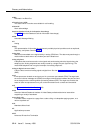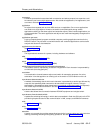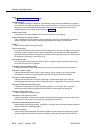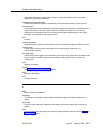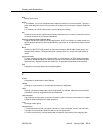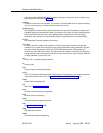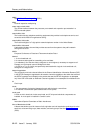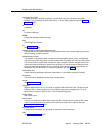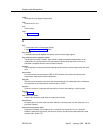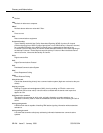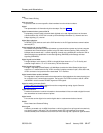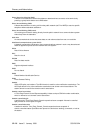
Glossary and Abbreviations
Issue 5 January 1998 GL-11555-230-024
100 call seconds is abbreviated CCS. If a facility is busy for an entire hour, then it is said to have
been busy for 36 CCS. See also Erlang.
capability
A request or indication of an operation. For example,
Third Party Make Call
is a request for setting
up a call;
event report
is an indication that an event has occurred.
capability group
Set of capabilities, determined by switch administration, that can be requested by an application.
Capability groups denote association types. For example,
Call Control
is a type of association that
allows certain functions (the ones in the capability group) to be performed over this type of
association. Also referred to as administration groups or application service elements (ASEs).
CA-TSC
Call-Associated Temporary Signaling Connection
cause value
A value is returned in response to requests or in event reports when a denial or unexpected
condition occurs. ASAI cause values fall into two coding standards: Coding Standard 0 includes
any cause values that are part of AT&T and CCITT ISDN specifications; Coding standard 3
includes any other ASAI cause values. This document uses a notation for cause value where the
coding standard for the cause is given first, then a slash, then the cause value. Example: CS0/100
is coding standard 0, cause value 100.
CBC
Call-by-call or coupled bonding conductor
CC
Country code
CCIS
Common-Channel Interoffice Signaling
CCITT
CCITT (Comitte Consultatif International Telephonique et Telegraphique), now called
International
Telecommunications Union
(ITU). See International Telecommunications Union (ITU).
CCMS
Control-Channel Message Set
CCS
See CCS or hundred call seconds.
CCSA
Common-Control Switching Arrangement
CDM
Channel-division multiplexing
CDOS
Customer-dialed and operator serviced
CDR
See Call Detail Recording (CDR).
CDRP
Call Detail Record Poller
CDRR
Call Detail Recording and Reporting




